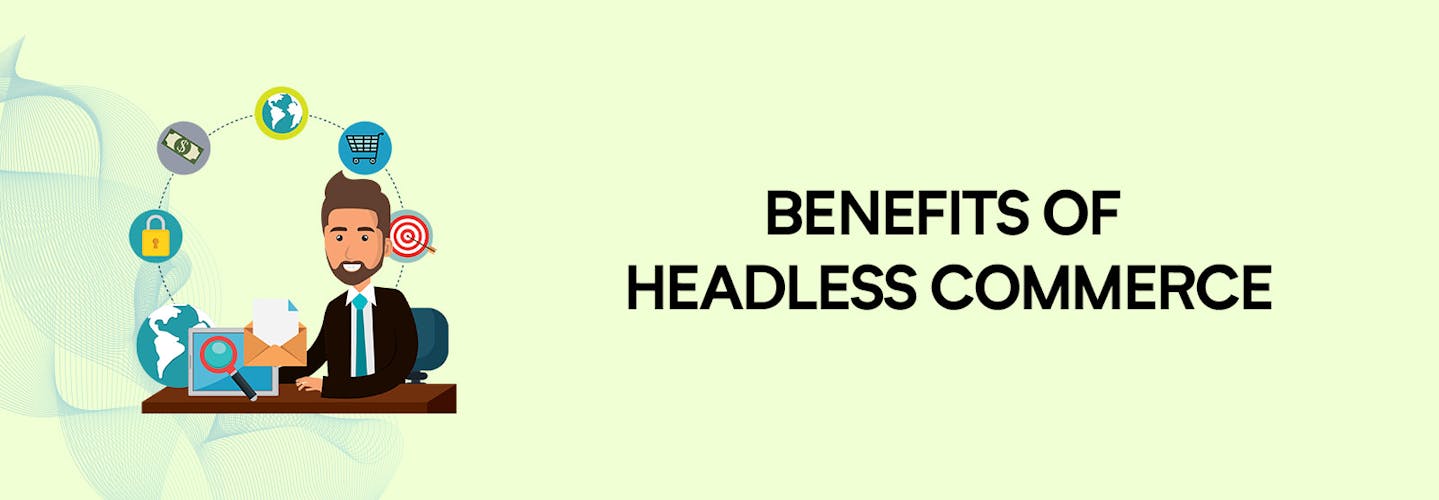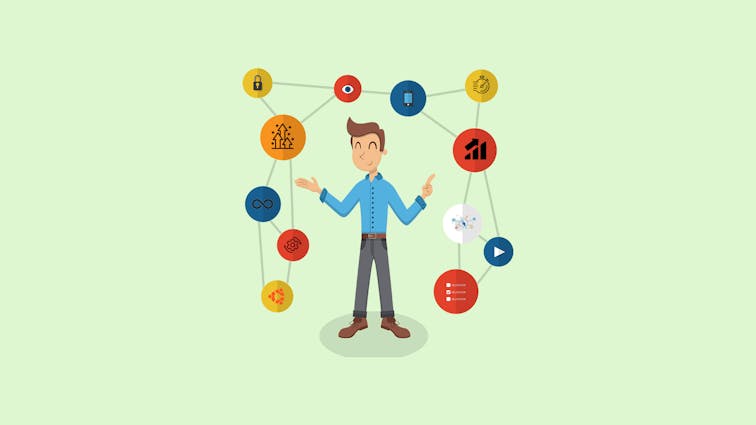
The Future of Ecommerce: Exploring the Benefits of Headless Commerce
Have you ever heard of the term “headless commerce” and wondered what it’s all about? Well, you’re not alone.
It’s a buzzword that’s been making waves in the ecommerce landscape, and for good reason.
As we navigate through the ever-evolving digital marketplace, the importance of headless commerce is becoming increasingly apparent.
In 2021, retail e-commerce sales amounted to approximately 5.2 trillion U.S. dollars worldwide, and this figure is forecast to grow by 56 percent, reaching about 8.1 trillion dollars by 2026.
With such staggering numbers, it’s no surprise that businesses are looking for innovative ways to enhance their e-commerce platforms.
It’s a game-changer, a new approach that’s reshaping how businesses operate online. But what exactly is it, and why is it so important? Let’s break it down.
Understanding Headless Commerce:

At its core, headless commerce is a separation of the front end and back end of an ecommerce platform.
Imagine a mannequin in a store - the ‘head’ is the front end, what the customer sees and interacts with. It’s the display, the user interface, the design, and layout of your online store.
The ‘body’ is the back end, the behind-the-scenes operations that keep the store running. This includes inventory management, order processing, and other administrative functions.
In a traditional ecommerce setup, the head and body are connected. Changes to the front end can impact the back end, and vice versa. This can limit flexibility and slow down the implementation of updates or changes.
But what if we could remove the head, allowing it to operate independently from the body?
That’s the essence of headless commerce. It allows businesses to work on the front end and back end separately, without one affecting the other.
This decoupling provides a host of benefits, including greater flexibility, improved performance, and a better user experience.
So, How Does Headless Commerce Differ From Traditional Commerce?
The key difference lies in the flexibility and control it offers. With traditional commerce, you’re often limited by the constraints of your platform.
Want to implement a new feature or redesign your site? You’ll need to consider how this will impact your back end.
With headless commerce, these constraints are lifted. You have the freedom to customize your front end without worrying about disrupting your back end operations.
In the next sections, we’ll delve deeper into the benefits of headless commerce and why it’s becoming a popular choice for businesses looking to thrive in the digital age. So, stay tuned!
Key Benefits of Headless Commerce
Let’s dive into the key benefits of headless commerce that are making it a go-to choice for businesses worldwide.

1. Unlimited Customization
One of the most exciting benefits of headless commerce is the unlimited customization it offers. In the traditional ecommerce setup, you’re often stuck with the design and functionality provided by your platform.
But with headless commerce, the sky’s the limit. You can design and build a front end that perfectly aligns with your brand and delivers a unique, personalized experience for your customers.
2. Scalability
Headless commerce also supports scalability, which is crucial for businesses looking to grow.
With the ability to easily integrate new technologies and platforms, businesses can scale their operations effectively.
3. Agility & Flexibility
Finally, headless commerce offers unparalleled agility and flexibility. Businesses can quickly respond to market changes, adapt their front end to suit evolving customer preferences, and bring new products or features to market faster.
4. Omnichannel Experience
Headless commerce is a game-changer when it comes to delivering an omnichannel experience.
In today’s digital age, customers interact with brands across various channels - from social media and mobile apps to physical stores and online marketplaces.
Headless commerce allows businesses to deliver a consistent and seamless customer experience across all these channels.
A great example of delivering an omnichannel experience is Apple. They have used headless commerce to unify their online and offline customer experiences.
Customers can browse products online, try them in-store, and make purchases through the mobile app, all with a consistent user experience.
This omnichannel approach has led to increased customer satisfaction and loyalty.
5. Rapid Experimentation
Headless commerce also enables rapid experimentation.
Businesses can quickly test and implement new features or changes on the front end without disrupting the back end operations.
This allows for faster innovation and a quicker response to market trends or customer feedback.
6. Improved Conversion Rates
One of the most significant benefits of headless commerce is the potential for improved conversion rates.
By offering a seamless and personalized customer experience, businesses can effectively engage customers and drive conversions.
7. Ease of Integrations
Another major advantage of headless commerce is the ease of integrations.
With the front end and back end operating independently, it’s easier to integrate with other platforms and tools.
This could be anything from email marketing software and customer relationship management (CRM) systems to social media platforms and analytics tools.
8. Faster Site Speed
Site speed is a critical factor in the online shopping experience, and headless commerce can significantly improve it.
By decoupling the front end from the back end, businesses can optimize their site performance without affecting their back end operations.
9. Lower Total Cost of Ownership
Headless commerce can also lead to a lower total cost of ownership. By decoupling the front end and back end, businesses can reduce their IT costs and streamline their operations.
10. Greater Control
Headless commerce provides businesses with greater control over their ecommerce operations.
They can customize their front end to suit their brand and customer preferences, without worrying about disrupting their back end operations.
IKEA, the world-renowned furniture retailer, has leveraged this benefit to create a unique and engaging online shopping experience that perfectly aligns with their brand.
11. Best-in-Class Capabilities
Finally, headless commerce offers best-in-class capabilities. From personalized customer experiences to seamless integrations and omnichannel retailing, businesses can leverage advanced features to stay ahead of the competition.
Amazon, the global ecommerce giant, is a prime example of a business that has leveraged these advanced capabilities to dominate the ecommerce landscape.
Case Studies:
Let’s look at some real-world examples of businesses that have successfully implemented headless commerce and reaped its benefits.
- Nike: Nike used headless commerce to offer a highly personalized online shopping experience. They implemented features like personalized product recommendations and interactive style quizzes, leading to increased customer engagement and sales.
- Adidas: Adidas integrated their headless commerce platform with their CRM and email marketing software. This allowed them to streamline their marketing efforts, improve customer communication, and ultimately increase their conversion rates.
- Apple: Apple used headless commerce to unify their online and offline customer experiences. Customers can browse products online, try them in-store, and make purchases through the mobile app, all with a consistent user experience. This omnichannel approach led to increased customer satisfaction and loyalty.
- Sephora: Sephora used headless commerce to regularly test and roll out new features on their website. This not only kept their site fresh and engaging but also allowed them to quickly adapt to changing customer preferences.
- Amazon: Amazon leveraged the agility and flexibility of headless commerce to quickly scale their operations during the COVID-19 pandemic. They were able to quickly update their front end to handle the increased traffic, introduce new features like contactless delivery, and expand their product range, all without disrupting their back end operations.
Potential Drawbacks of Headless Commerce
While headless commerce offers numerous benefits, it’s important to also consider potential challenges and drawbacks.

- Setup and Maintenance Costs: Implementing a headless commerce solution can be more expensive upfront due to the need for specialized development skills and resources. Maintenance costs can also be higher as you’ll need to manage and update both the front end and back end separately.
- Complexity: Headless commerce can be more complex to set up and manage compared to traditional ecommerce platforms. This can pose challenges for businesses without a dedicated IT team or those with limited technical expertise.
- Integration Challenges: While headless commerce allows for easier integrations, it can also pose challenges. Not all tools and platforms may be compatible with your chosen headless commerce solution, which could limit your options.
- Potential SEO Challenges: If not properly managed, headless commerce could potentially impact your SEO. This is because search engines may have difficulty crawling and indexing your site if the front end and back end are not properly synchronized.
Are you ready to go Headless with Aasaan?
Aasaan is a headless store builder and API-first commerce platform that allows you to visually build next-generation shopping experiences, all without code. With Aasaan, you can enjoy benefits such as:
- Lightning-Fast Site Speed: Experience a 70% increase in site speed, ensuring a seamless shopping experience for your customers.
- Boosted Conversion Rates: Witness a remarkable 38% uplift in conversion rates, maximizing your sales potential.
- Elevated Average Order Value: Enjoy a 20% surge in average order value, driving higher revenue per transaction.
- Accelerated Time to Market: Achieve 10x faster time to market, enabling you to stay ahead of the competition.
Aasaan seamlessly integrates with your existing backend or you can start with our API-first commerce platform and harness the power of best-in-class technology within seconds.
You can manage all aspects of your business from a single admin app, making it easy to streamline your operations and stay on top of your business.
So, are you ready to transform your ecommerce business with Aasaan? Visit aasaan.app to get started today!
For more insight into how aasaan can fit into your workflows, go ahead and schedule a customized demo!








